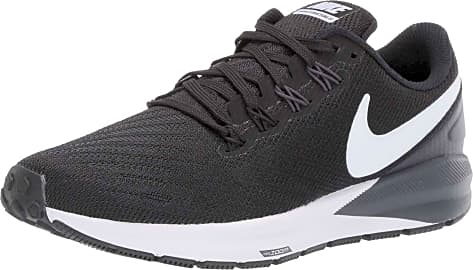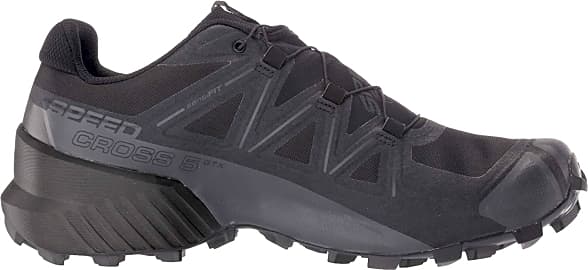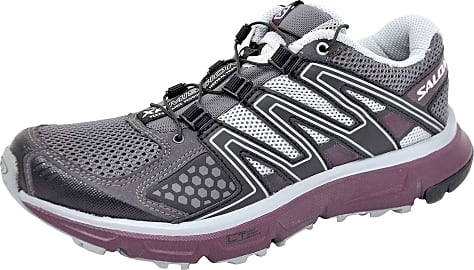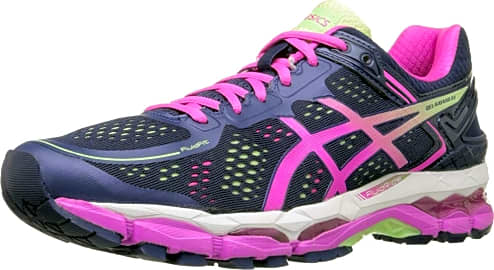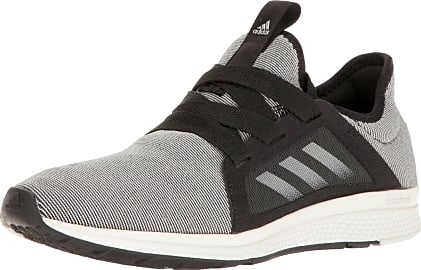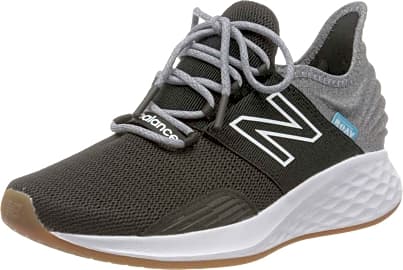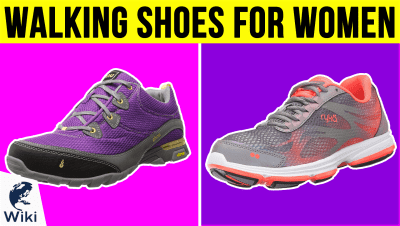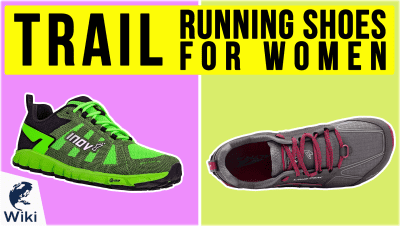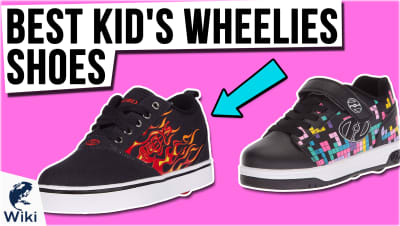The 10 Best Women's Running Shoes

This wiki has been updated 39 times since it was first published in May of 2015. If you want to enjoy the benefits that a regular jogging routine can provide without the pain and injuries that often come with one, then finding the right pair of women's running shoes is a must. These options are all designed to provide proper support and keep you comfortable pounding the pavement, so you can meet your goals without having to make any stops at the podiatrist's office. When users buy our independently chosen editorial picks, we may earn commissions to help fund the Wiki.
Editor's Notes
June 18, 2021:
The only major change made this time was upgrading to the Salomon Speedcross 5 from the Speedcross 4. We made sure to include the GTX version, which is built with a Gore-Tex exterior that is impressively waterproof. Despite its high level of protection, it's not terribly heavy. The rest of our suggestions remain unchanged, and we're confident that our selection offers something for everyone.
March 11, 2020:
A decent pair of running shoes is important if you want to develop and/or maintain good form, which in turn will help you stay healthy and avoid injury. The shoes we've chosen are mostly from brands that are firmly established in the world of athletics, such as Nike, New Balance, and Asics. All of these options feature breathable fabric, ample arch support, and appealing designs. For something a bit less sporty, consider a pair of walking shoes instead.
The On Clouds, Saucony Cohesion 8, Asics Gel-Contend 3, and Nike Air Zoom have all been removed, and the latter three replaced with updated versions: the Saucony Cohesion 10, Asics Gel-Contend 5, and Nike Air Zoom Structure 22. The New Balance Roav V1 is another new addition to the list.
Special Honors
Under Armour Breathe With a modern appearance and lightweight feel, these trainers are appropriate not just for running, but for group exercise classes where you want to look as good as you feel. They feature neon green laces and synthetic soles that do a great job of absorbing impact. dsw.com
Outdoor Voices HOKA x OV Clifton From a newer name in sportswear comes the Clifton 4, which are light as a feather and remarkably comfortable. Whether your plan is to train for a marathon or simply look cool and casual while grabbing brunch, this pair will definitely meet your needs. outdoorvoices.com
Adidas Swift These may have a retro look but they're every bit as modern as the next high-tech pair. Made with EVA foam, this option is available in baby pink, black, and light gray. They have the classic Adidas stripes, though they do run about half a size small. nordstrom.com
What Separates One Women's Running Shoe From Another?
As a result, distance runners are strongly cautioned against working out in racing shoes on a day-to-day basis.
When purchasing a pair of women's running shoes, the first thing you want to consider is how much cushion a specific pair of shoes can provide. Any running shoe with a half-an-inch or more of reinforced foam around its midsole should provide a significant amount of support. Shoes with a thin layer of foam can lead to anything from pulled muscles and ankle sprains to long-term cartilage damage and spurred bones.
Ideally, you'll want a women's running shoe to weigh somewhere between 1.8-2.4 lbs. Certain shoes can weigh more than this, but those shoes are generally designated for runners who are experiencing ongoing muscle problems. Racing shoes, which are also known as flats, weigh less than 1.3 lbs because they feature little cushion. As a result, distance runners are strongly cautioned against working out in racing shoes on a day-to-day basis.
A lot of runners prefer a shoe with a mesh design in that the built-in ventilation minimizes any risk of blisters, athlete's foot, or any odor-causing bacteria (among other things). If a shoe features a deep tread, that's a good indication that the shoe is custom-made for running on loose terrain. If a shoe features a narrow tread, that's a good indication that the shoe is custom-made for running on the street, or on a rubberized track.
In the end, every runner is looking for a shoe that can provide some individual blend of comfort, aerodynamics, and stability. This may require a bit of trial and error. Over time, you'll begin to gravitate toward the brands and models that suit you the most.
How Do You Know When It's Time For a New Pair of Running Shoes?
The key to any pair of running shoes' support is its midsole. Once the foam in that midsole has lost its buoyancy, those shoes - at least from a fitness perspective - are shot. As the midsole begins to break down, a runner can actually feel her legs striking the ground harder. A few hours after a long workout, that runner may experience stiffness throughout the feet or lower-legs.
A few hours after a long workout, that runner may experience stiffness throughout the feet or lower-legs.
Most experts recommend changing running shoes once every 300 miles specifically to avoid any risk of injuries. If you don't keep track of your distance, you can still use that 300-mile threshold as a general gauge of when it might be time to buy a new pair of shoes. Assuming that your existing shoes aren't completely worn, it's recommended that you alternate between the old shoes and the new shoes for a week or so. This way your feet can adjust incrementally, as opposed to all at once.
A running shoe's outsole (aka the bottom sole) wears in different places based on how a person's foot strikes the ground. While the physics of an individual stride may vary, every runner causes some portion of the outsole to erode over time. Once you notice that the rubber outsole has begun to wear through to the foam midsole, it's safe to assume that the shoe as a whole is no longer providing an optimum level of support.
If you notice that the outsoles of your shoes keep wearing through too quickly (or unevenly), this could be an indication of a larger issue with your stride. It's best to consult with a specialist who can diagnose - or perhaps even help you to correct - any problem.
A Brief History of The Running Shoe
Footwear has been around for centuries. And while there is nothing revolutionary about the idea of wearing a shoe for comfort, the idea of a specifically-designed recreation shoe didn't come into its own until the late 1800s. These early running shoes, designed in England, were known as "plimsoils," a reference to the plimsoil line of a ship, which resembled a horizontal band circling the collar of these shoes.
Despite being marketed as leisurewear, plimsoils were adopted by athletes almost immediately. In short order, manufacturers began designing plimsoils with custom soles for gaining traction or achieving bounce. During the 1890s, the British Military began using plimsoils during fitness drills. Soon after, the British public schools made plimsoils a requisite part of their physical-fitness ensemble.
These trainers, as they came to be called, caught on like wildfire.
In 1895, a British company named J.W. Foster & Sons began manufacturing plimsoils that were specifically designed for running. These trainers, as they came to be called, caught on like wildfire. Within one decade, J.W. Foster had evolved into an international supplier. Within three decades, the company was designing shoes for all of the runners who were competing in the 1924 Olympics.
American companies had begun developing running shoes of their own by this point. None of these companies made a major splash, however, until the 1960s, when a burgeoning start-up called Nike began to open its own stores. Nike was the brainchild of Oregon track coach Bill Bowerman and one of his standout distance runners, Phil Knight. Bowerman had a unique understanding of a runner's mechanics. For years, Bowerman had been handcrafting sneakers (including early prototypes of the Nike Waffle Racer) in a garage that was attached to his home.
Running-shoe companies grew larger during the fitness craze of the 1980s, while branching out with specific lines that were devoted to trail running, distance running, sprinting, cross country, triathlon, and even ultra-marathoning. Today, running shoes are more popular - and viable - than they have ever been.
In 2014, running shoes accounted for over a billion in sales, worldwide, thanks in large part to a proliferation of organized running events that focus more on enjoyment than hardcore competition. According to a recent study, more than 42% of Americans run for fitness on a regular basis. The largest core demographic of that percentage is represented by women, ages 25-34.



